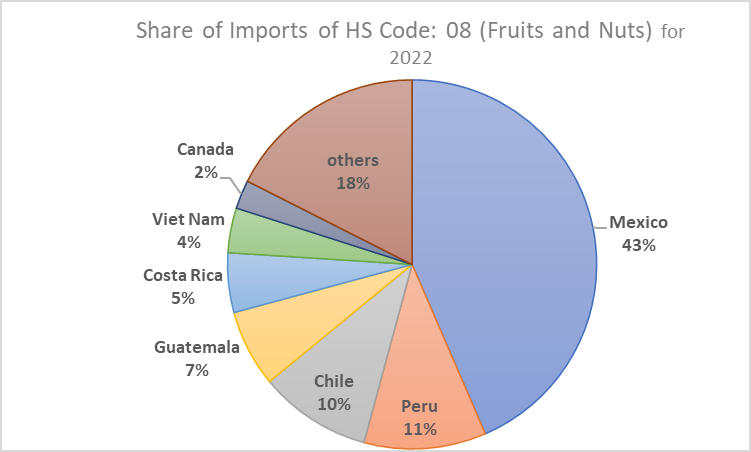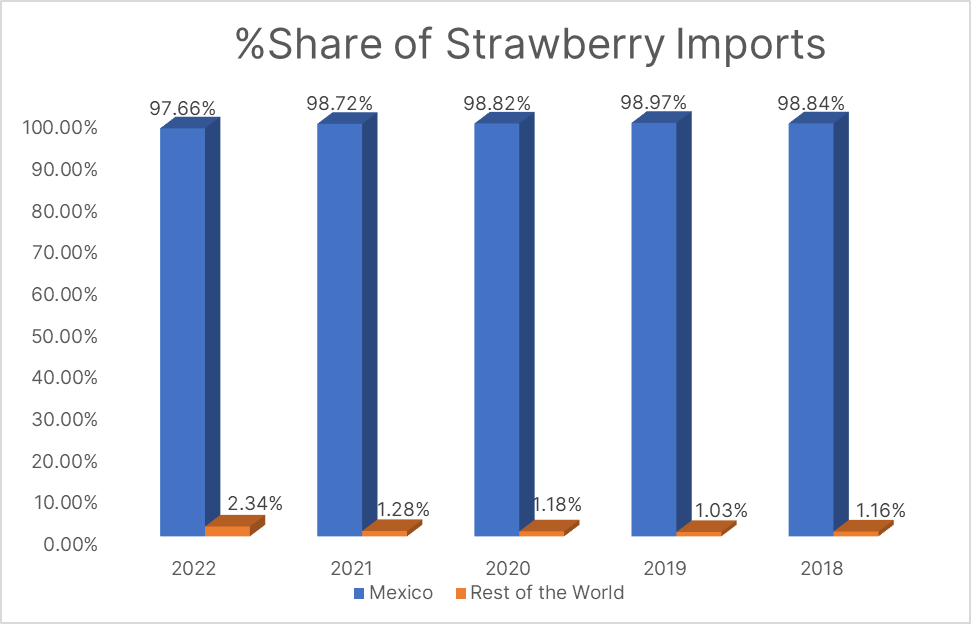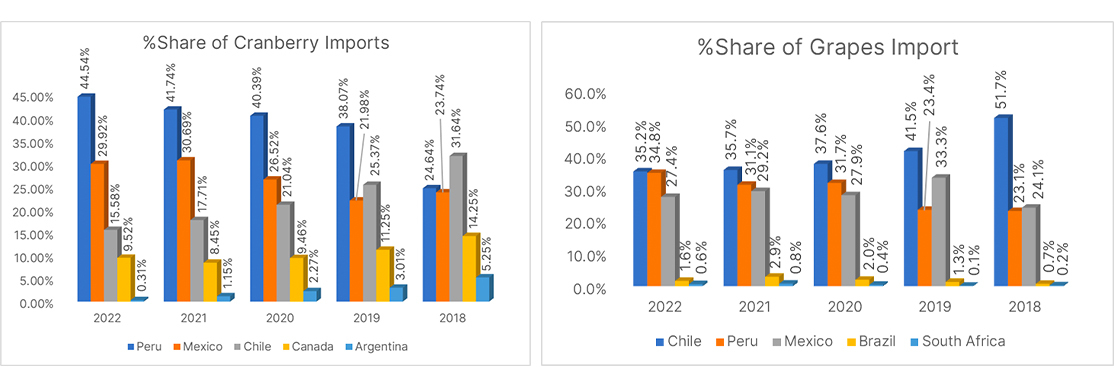Webinars & Videos
Watch videos featuring supply chain experts
The global fruit industry has experienced remarkable growth in the last few years, with the demand for fresh fruits rising. Since 2017, the imports for the fruit industry have grown by a whopping 34%, reaching $25 billion in 2022 from $18 billion in 2017.
In addition, the recent global disruptions have created a volatile trade environment for most countries and their prominent industries. However, one thing has remained constant across these disruptions - the dominance of Mexico, Peru, and Chile in the US fruit industry.
Exports from Mexico, Peru, and Chile account for a staggering 64% of all fruit imports(HS Code - 08) in the US fruit industry as of 2022. Of the three, Mexico holds the largest market share at about 43%.

Additionally, for 4-digit HS codes 0810, 0806, and 0804, which specifically refer to fresh or dried fruits such as bananas, grapes, and dates, Mexico, Chile, and Peru also top the list as exporters to the US.
As you dive deeper into 6-digit HS codes such as 081010, 080450, and 080610 this trend repeats. These HS Codes represent specific types of fruits such as strawberries, guavas, and cranberries respectively. The data suggests that these three countries have a significant advantage in the production and export of fruits and vegetables to the US. Based on historical analysis, this trend will likely continue for the foreseeable future.
Mexico
Mexico has established itself as a dominant player in the fruit export industry. It is the leading exporter to the US for strawberries, guava, and mango. Since 2017, Mexico holds a mind-numbing 98% market share for strawberry exports to the USA.
In addition, Mexico also leads the way in guava and mango imports, contributing to over 50% share of total imports since 2017 for both fruits.

The trade value of these imports has also increased significantly over the past five years, with the import value of strawberries increasing by 68% from $637M in 2017 to $1.07B in 2022. Similarly, the trade value of guava and mango imports has seen a 33% increase, rising from $368M in 2017 to $490M in 2022. Mexico's continued dominance in exports to the US in these categories highlights the country's strength in fruit production and export and the likelihood of its continued success in the future.
Peru & Chile
Peru and Chile have focused on cranberry and grapes as their major exports. In terms of grape exports for the US, Chile has traditionally held the majority market share, but its dominance has waned over the years, with its share declining from 51% in 2017 to 35% in 2022. Peru, on the other hand, has seen its share of grape exports to the US increase from 30% in 2017 to 35% in 2022. The country is now competing with Chile for the top spot.

Peru's growth in cranberry exports has been remarkable, with an incredible 400% increase in recent years. In 2018, it surpassed Chile as the leading exporter of cranberries to the USA, and it has held onto that title since then, with a whopping 45% share of total cranberry exports and a trade value of $857 million.
The future paints a positive picture for the fruit industry in these three countries. With an upwards growth trajectory and improving US demand, it presents numerous opportunities for businesses. If you are a part of the fruit industry between these three countries and the US, consider trying out Trademo Intel. Intel helps drive revenue and growth for buyers and suppliers around the world with trade insights and data for global supply chains.